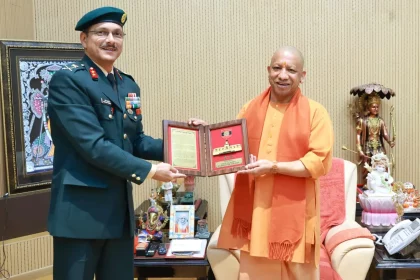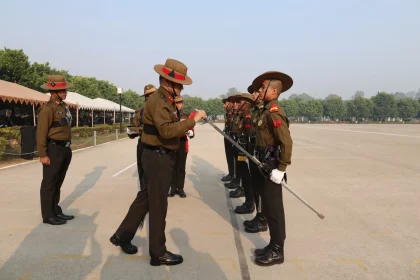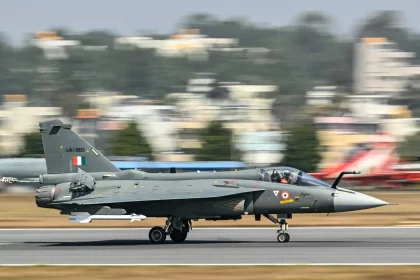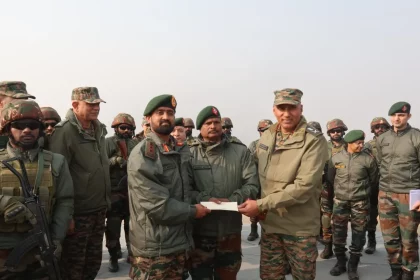S-400 Air Defence System, Su-57 Stealth Jet on Agenda Ahead of Putin’s India Visit: Kremlin
Key Defence Deals, Technology Transfer, and Strategic Cooperation Expected to Dominate 23rd India–Russia Annual Summit.
Major General Manish Kukreti Calls on UP Chief Minister After Assuming Command of MUPSA
Strengthening Military-Civil Cooperation and Promoting Welfare of Defence Families in Uttar Pradesh.
363 Agniveers Join Indian Army at 39 Gorkha Training Centre, Varanasi
Honouring Discipline, Courage, and Commitment: 363 Young Recruits Take Oath to Defend the Nation.
HAL Leads as Indian Defence Firms Post 8.2% Revenue Growth: SIPRI Report
HAL, BEL, and MDSL Drive India’s Defence Revenue Growth Amid Global Arms Surge.
Air Marshal Narmdeshwar Tiwari Flies Mirage 2000 on Final Visit to No. 1 Squadron During Farewell as Commodore Commandant
VCAS Air Marshal Tiwari Undertakes Mirage 2000 Sortie and Reviews No. 1 Squadron on Farewell Visit.
Lt Gen Pratik Sharma Reviews Security and Operational Readiness in Kashmir Valley
Army Commander praises troops for professionalism and operational excellence in Kashmir.






